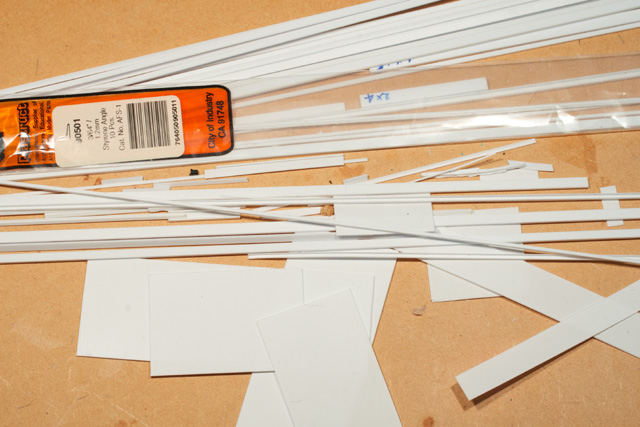Techniques in generalI'm explaining in separate pages how I attacked the different wagons as some of them required their own techniques. Generally, from the drawings you can cut out parts required from plastic sheet then add the detail parts using various sizes of flat and angle plastic strip. The readily available Plastruct or Evergreen range of plastic strips makes this job so much easier. One big tip - Be accurate with measuring. Measure twice or even three times. And not to the nearest millimeter. Go for the fractions as best your eyes can manage. Learn how to judge fractions of a millimeter on your metal ruler. This accuracy will pay off in well fitting parts, as well as providing the right proportion and "look" of your models and their details.
 For bogie wagons, check out the most EXCELLENT pdf by David Baillie on how to very easily make bogie underframes. Tip - If making several wagons of the same type, use the "production line" method. Cut out all the parts required at the same time and complete each stage of construction at the same time for all. This will give consistent results for each wagon in the rake. Tip - A great tool for making sure assemblies stay flat while setting is glass. I steal small sheets from old photo frames. Even pick up cheaply small photo frames on special in the big chain stores. Keep an eye out for suitable candidates for bashing - kits or raw materials and objects. Some may require more work in the end that is worth it - good example were my Ub bogie flat wagon and Ud bogie well wagon projects! Should've built them from scratch. If you want to build lots and lots of the same type, like I did with the La8, (I went a bit crazy here!) then you could make moulds of your parts and cast yourself several "kits" of parts. Making masters and moulds and casting has been covered reasonably well on t'Internet and for me a really good reference was the Motorised Dandruff site. More specifically the sections on casting. And there's another reference on The Waikikamukau chronicles blogspot. Google search silicone moulding and check out the same search on YouTube for even more useful demos. That's where I started. It is not necessary to get into the moulding and casting parts. Where I describe making a master, just make as many of those parts as you need. But where I have used moulding and casting, my pages will assume that you have had a look at relevant articles or at least know something about the techniques involved.
|